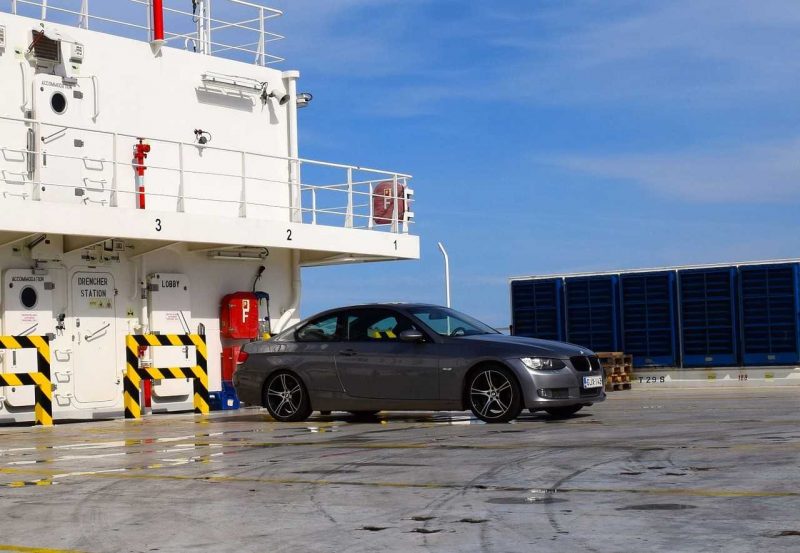Moving to a new home is a significant life event, often filled with excitement and anticipation. However, it’s also a time when financial planning is paramount. Estimating moving costs is a crucial step in ensuring a smooth transition. Without a dependable estimate, unexpected costs can disrupt your budget and increase the stress of an already demanding process. In this article, we’ll explore assessing moving costs and the key factors that influence them. Understanding these factors is crucial for budget-friendly decision-making during your move.
Preview of Key Moving Cost Factors
Before you delve into the details of estimating moving costs, it’s essential to understand the key factors that come into play. The upcoming sections of this post will explore these factors in-depth, but here’s a preview:
- Distance: The physical distance between your current and new residence plays a significant role in determining your moving costs. Whether it’s a local, long-distance, or international move, distance matters.
- Volume or Weight of Belongings: The amount of stuff you’re moving, whether measured by volume or weight, affects your estimate. More items often mean higher costs.
- Type of Move: The nature of your move, whether it’s local, long-distance, or international, comes with different cost considerations.
- Time of Year: The timing can impact how much the movers cost, with peak seasons often leading to higher prices.
- Move Complexity: Specialized items, additional services, and unique packing requirements can all affect the complexity and cost of your move.
Understanding these factors prepares you for efficient and informed cost estimation, aligning your move with your budget and expectations.
Distance
When it comes to estimating moving costs, one of the most prominent factors is the distance between your current residence and your new home. The distance not only plays a substantial role in determining the final cost but also dictates the overall logistics of the move. The closer your new home is to your current location, the lower your relocation expenses are likely to be. Local moves, typically within the same city or nearby areas, tend to be the most cost-effective. This is because local movers usually require less time and fuel for transportation.
On the other hand, long-distance moves, which encompass moving to a different city or state, involve higher costs. These costs can accumulate due to higher mileage, fuel expenses, and possible crew overnight stays. Understanding the differences between these types of moves is crucial. Local moves are generally defined as those within a radius of 50 miles or less, while long-distance or cross-country moves exceed this distance. A cross-country move is generally classified as long-distance if it exceeds 400 miles in distance. Long-distance moves cost more than local ones due to increased mileage and time, though less than international moves.
To provide a clearer picture, let’s consider two examples:
Example 1: Local Move. Imagine moving within the same city, just a few neighborhoods away. Your moving company charges an hourly rate. In this scenario, your total moving cost may amount to a few hundred dollars, primarily comprising labor costs and minimal fuel expenses.
Example 2: Long-Distance Move. Now, suppose relocating from New York City to Miami, a distance of roughly 1,280 miles. Your long-distance moving estimate covers fuel, labor hours, and possibly crew accommodations. Such moves for larger households may vary from a few thousand to several thousand dollars.
These examples underscore how distance impacts cost estimates.
| Type of Move | Distance from New Jersey | Average Cost | Description |
|---|---|---|---|
| Local | Up to 50 miles | $500 – $1,500 | Costs are generally lower due to shorter distances, less fuel consumption, and no overnight stays for the crew. |
| Long-Distance | 50 to 2,500 miles | $2,000 – $7,000 | Costs increase due to higher mileage, fuel expenses, and potential crew overnight stays. |
| International | Over 2,500 miles | $8,000 – $20,000 | International moves involve customs, shipping or air freight, and other logistical complexities, leading to higher costs. |
Volume or Weight of Belongings
The volume or weight of your belongings is a pivotal factor in assessing moving costs. It directly impacts the logistics of the move, the space required, and the resources needed for a successful transition. The more items you have to move, the higher the transfer costs are likely to be. This is because:
- Space Requirement: Moving companies need to allocate sufficient space in their trucks to accommodate your belongings. The more items you have, the more space is required, potentially necessitating more oversized or additional trucks.
- Labor Hours: The time it takes to load and unload your belongings directly correlates with the volume or weight of items. More items typically mean more labor hours, increasing the labor cost component of your estimate.
- Packaging and Materials: A greater number of moving containers may also require more packing materials such as boxes, packing paper, and bubble wrap. These materials add to your moving expenses.
- Transportation Costs: The weight of your belongings impacts fuel consumption. Heavier loads result in higher fuel costs, especially for long-distance moves.
Moving companies commonly use two pricing models: weight-based and volume-based.
- Weight-Based Pricing: In this model, your estimate is based on the total weight of your belongings, commonly used for long-distance and international moves. Movers weigh items with specialized scales or by weighing the truck before and after loading.
- Volume-Based Pricing: Here, the estimate is based on your items’ space in the truck, measured in cubic feet or cubic meters. Volume-based pricing is common for local moves or when sharing a truck with others.
By being strategic about what you move, you can optimize your average cost, making the process more efficient and cost-effective.
Type of Move
The type of move you’re embarking on plays a pivotal role in determining your moving costs. The type of move depends on distance. Whether it’s a local, long-distance, or cross-county relocation, each comes with its unique set of considerations and cost variations. Earlier, we have seen the differences between them. But, to be very shortly:
1. Local Moves: Local moves are typically the most budget-friendly option. Transportation expenses are relatively low since the distance is short.
2. Long Distance Moves: Moving to a different city or state involves higher costs due to the increased mileage and time.
Each type of move comes with its own set of challenges and cost factors. Understanding these distinctions aids informed decision-making and effective budgeting for your moving option.
Time of Year
Moving during peak seasons, which typically occur in the summer months and around holidays, can significantly impact your moving costs. Demand for moving services is highest during these periods, leading to:
- Higher Prices: Moving companies often charge higher rates when demand is at its peak.
- Limited Availability: You may face challenges securing your desired moving dates due to high demand.
- Extended Planning Time: Planning your move during peak seasons might require more time and flexibility due to the limited availability of moving companies and resources.
To potentially save on costs to move, consider the following timing strategies:
- Off-Peak Seasons: If possible, schedule your move during the off-peak seasons, which are typically late fall, winter, or early spring. Moving companies tend to offer lower rates during these times when demand is lower.
- Mid-Month or Mid-Week: Choose mid-month dates or mid-week days for your move. These tend to be less busy, allowing for more flexibility in scheduling and potentially lower prices.
- Plan Well in Advance: Regardless of the season, plan your move well in advance. Booking early can help you secure the best rates and ensure the availability of your preferred moving company.
By strategically timing your move, you can mitigate the impact of peak season prices and increase your chances of securing a more budget-friendly estimate.
| Time Period | Cost Implication |
|---|---|
| Peak Season (Summer, Holidays) | Higher |
| Off-Peak Season (Fall, Winter, Spring) | Lower |
| Mid-Month | Lower |
| Mid-Week | Lower |
Move Complexity
Special requirements, such as fragile items or unique packing needs, can significantly impact moving cost estimates. Firstly, these items often require specialized packing materials and techniques, which can increase material expenses.
Secondly, the delicate nature of such items may necessitate more labor hours for careful packing, loading, and unloading, raising labor costs. Thirdly, custom packaging solutions and the construction of crates or protective enclosures can be costly, further inflating the calculation. Additionally, insurance coverage for these items may be necessary, adding to the overall cost. The transportation of fragile or unique items might require dedicated space or vehicles, affecting the cost of moving.
Packing Services
Hiring expert packing services can be a wise decision during a move, but it’s important to understand the cost implications involved.
Professional packing services incur labor costs based on hours worked, potentially escalating with the complexity of the task. While pricier, these services include tailored packing materials that protect items and prevent costly damages. They save substantial time and effort, which compensates for the added movers cost.
Skilled packers optimize packing efficiency, potentially reducing the need for excess materials and truck space. Professional mover reduce the risk of damage. Finally, these services are customizable, enabling you to choose which items you want professionals to pack, potentially making it a cost-effective option.
Specialized Items
Moving bulky or specialized items can significantly impact the overall cost estimate of a relocation. Firstly, the sheer size and weight of such items often necessitate specialized equipment and manpower, both of which come at an additional cost. For example, moving a grand piano or vintage chandelier may need special packaging and handling. Moreover, these items may demand a larger moving truck or even a separate vehicle, which adds to the transportation costs. In such cases, a full-service mover is an option. Fragile specialized items, such as antique furniture or delicate artwork, may need custom crating or climate-controlled transport, increasing the assessment. Complex disassembly, packing, and reassembly can lengthen the move, possibly increasing labor costs. Lastly, insuring valuable or irreplaceable specialized items can add to the total estimate, safeguarding them during the moving day.
In summary, moving bulky or specialized items entails distinct challenges and costs to factor into your moving estimate.

Additional Services
When planning a move, it’s crucial to explore various additional services that can significantly impact the overall cost. One such service is packing and unpacking, which can save time and effort but adds expense. Consider professional packers for a time-saving option. Loading and unloading services are beneficial for heavy or bulky items needing specialized handling. If you’re moving long-distance, storage services might be necessary for temporarily housing your belongings.
Other services to consider include assembly and disassembly of furniture or appliances, which can be a lifesaver when dealing with complex items. Moreover, handling and transporting fragile items may demand special crating or climate-controlled storage, raising expenses while safeguarding delicate belongings.
The necessity for these services often depends on your specific circumstances and needs. Assess the move’s complexity, your time availability, and your comfort level with tasks to decide when these services are necessary. When budgeting, obtain quotes from moving companies for the services you require and factor them into your overall moving budget. While these services add to costs, they reduce stress and streamline moving, valuable investments for a successful relocation.
Final Words
In conclusion, estimating moving costs is a critical part of planning a successful relocation. Without a moving cost calculator, unexpected expenses can disrupt your budget and increase the stress of the moving process. Understanding key factors is important to understanding relocation cost factors.
Whether you’re moving locally, or long-distance, assessing these factors will help you plan a smoother and more cost-effective transition to your new home. Keep in mind that certain services and factors, despite adding to the cost, can reduce stress and simplify the move, making them worthwhile investments for a successful relocation.
While understanding the factors that influence moving costs is essential, it’s equally crucial to choose a reliable moving company familiar with your specific relocation area. For instance, if you’re considering a move within Bergen County, areas like Englewood have their unique characteristics and challenges that our team is well-equipped to handle.









